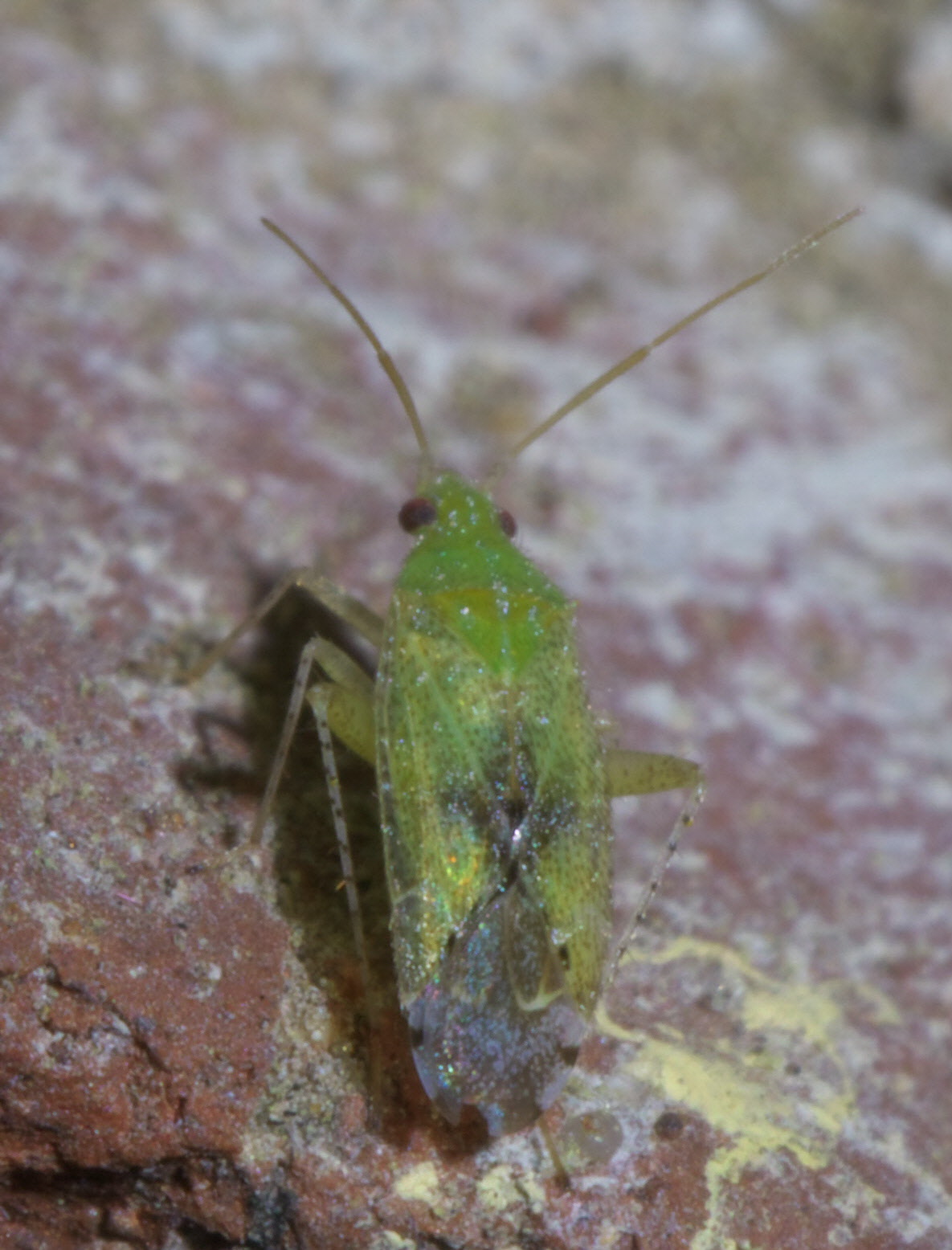|
Ranzovius Clavicornis
''Ranzovius clavicornis'' is a species of plant bug in the family Miridae The Miridae are a large and diverse insect family at one time known by the taxonomic synonym Capsidae. Species in the family may be referred to as capsid bugs or "mirid bugs". Common names include plant bugs, leaf bugs, and grass bugs. It is th .... It is found in North America. It scavenges dead insects for food, and can be found inhabiting the webs of '' Anelosimus studiosus'', stealing the spider's prey. References Further reading * * Phylini Articles created by Qbugbot Insects described in 1927 Hemiptera of North America {{Miridae-stub ... [...More Info...] [...Related Items...] OR: [Wikipedia] [Google] [Baidu] |
Plant Bug
The Miridae are a large and diverse insect family at one time known by the taxonomic synonym Capsidae. Species in the family may be referred to as capsid bugs or "mirid bugs". Common names include plant bugs, leaf bugs, and grass bugs. It is the largest family of true bugs belonging to the suborder Heteroptera; it includes over 10,000 known species, and new ones are being described constantly. Most widely known mirids are species that are notorious agricultural pests that pierce plant tissues, feed on the sap, and sometimes transmit viral plant diseases. Some species however, are predatory. Description Miridae are small, terrestrial insects, usually oval-shaped or elongate and measuring less than in length. Many of them have a hunched look, because of the shape of the prothorax, which carries the head bent down. Some are brightly coloured and attractively patterned, others drab or dark, most being inconspicuous. Some genera are ant mimics at certain stages of life. The Mi ... [...More Info...] [...Related Items...] OR: [Wikipedia] [Google] [Baidu] |
Anelosimus Studiosus
''Anelosimus studiosus'' is a subsocial tangle web spider or theridiid spider living in both North America and South America. In 2012, genetic analysis revealed a previously identified species, ''A. tungurahua'', is in fact the same species as ''A. studiosus.'' ''Anelosimus studiosus'' is part of the comb-footed spider family, Theridiidae, and can be found throughout much of North and South America, as it is a tropical and temperate spider.Duncan et al 2010. Relatedness and genetic structure in a socially polymorphic population of the spider ''Anelosimus studiosus''. Molecular Ecology 19, 810-818. ''A. studiosus'' exhibit social Polymorphism with two behavioral phenotypes; social spiders that live communally, and asocial solitary spiders.Susan E. Reichert and Thomas C. Jones (2008) “Phenotypic variation in the social behavior of the spider ''Anelosimus studiosus'' along a latitudinal gradient.” Animal Behavior 75(6): 1893-1902. Social spiders not only share the same living s ... [...More Info...] [...Related Items...] OR: [Wikipedia] [Google] [Baidu] |
Phylini
Phylini is a tribe of plant bugs in the family Miridae, based on the type genus ''Phylus''. There are at least 440 described species in Phylini. Subtribes and selected Genera * Full list of Phylini genera here Keltoniina Auth. Schuh & Menard, 2013 * ''Keltonia'' Knight, 1966 - Nearctic * '' Pseudatomoscelis'' Poppius, 1911 - Caribbean, Mexico * '' Reuteroscopus'' Kirkaldy, 1905 - New World Oncotylina Auth. Douglas & Scott, 1865 * ''Americodema'' T. Henry, 1999 - Nearctic * ''Asciodema'' Reuter, 1878 - Palearctic, Nearctic * '' Brachyarthrum'' Fieber, 1858 - Palearctic * ''Europiella'' Reuter, 1909 - Holarctic * '' Europiellomorpha'' Duwal, 2014 * ''Oncotylus'' Fieber, 1858 - Holarctic * ''Parapsallus'' Wagner, 1952 - Palearctic * ''Phyllopidea'' Knight, 1919 - Western Nearctic * ''Placochilus'' Fieber, 1858 - Palearctic * ''Plagiognathus'' Fieber, 1858 - Holarctic * ''Plesiodema'' Reuter, 1875 - Holarctic * '' Psallodema'' V. Putshkov, 1970 - Palearctic * '' Ranzovius'' Distan ... [...More Info...] [...Related Items...] OR: [Wikipedia] [Google] [Baidu] |
Articles Created By Qbugbot
Article often refers to: * Article (grammar), a grammatical element used to indicate definiteness or indefiniteness * Article (publishing), a piece of nonfictional prose that is an independent part of a publication Article may also refer to: Government and law * Article (European Union), articles of treaties of the European Union * Articles of association, the regulations governing a company, used in India, the UK and other countries * Articles of clerkship, the contract accepted to become an articled clerk * Articles of Confederation, the predecessor to the current United States Constitution * Article of Impeachment, a formal document and charge used for impeachment in the United States * Articles of incorporation, for corporations, U.S. equivalent of articles of association * Articles of organization, for limited liability organizations, a U.S. equivalent of articles of association Other uses * Article, an HTML element, delimited by the tags and * Article of clothing, ... [...More Info...] [...Related Items...] OR: [Wikipedia] [Google] [Baidu] |
Insects Described In 1927
Insects (from Latin ') are pancrustacean Hexapoda, hexapod invertebrates of the class (biology), class Insecta. They are the largest group within the arthropod phylum. Insects have a chitinous exoskeleton, a three-part body (head, Thorax (insect anatomy), thorax and abdomen (insect anatomy), abdomen), three pairs of jointed Arthropod leg, legs, compound eyes and one pair of antenna (biology), antennae. Their blood is not totally contained in vessels; some circulates in an open cavity known as the haemocoel. Insects are the most diverse group of animals; they include more than a million described species and represent more than half of all known living organisms. The total number of Extant taxon, extant species is estimated at between six and ten million; In: potentially over 90% of the animal life forms on Earth are insects. Insects may be found in nearly all Natural environment, environments, although only a small number of species reside in the oceans, which are dominated by ... [...More Info...] [...Related Items...] OR: [Wikipedia] [Google] [Baidu] |
.jpg)

